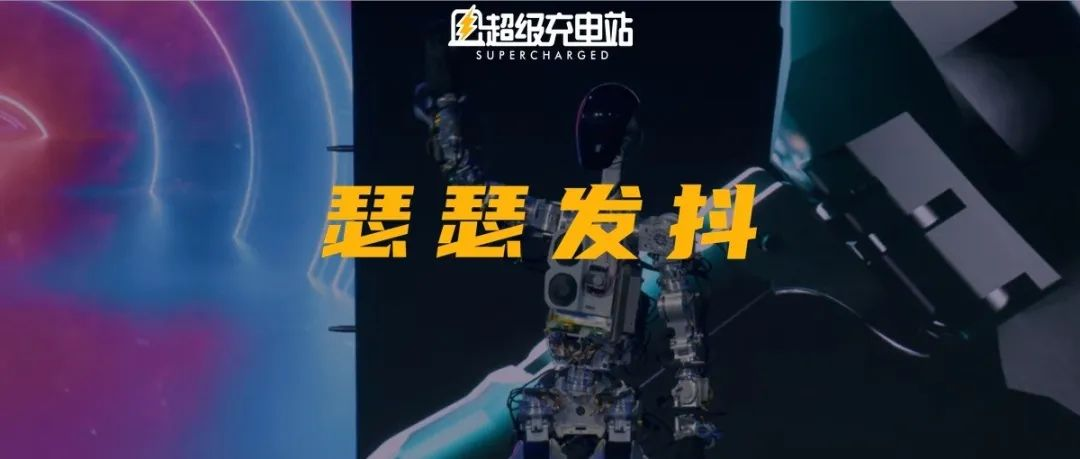Author: Cherio Cheng Yuan
I want to tell you a terrifying story.
Chang “Don’t F*ck Up” Yan, the founder of the supercharging station, former top 3 undergraduate philosophy student, Dongchehui namer, the man behind the AI technology in the automotive industry in Greater China, chief special commentator, DMS blind area, and the life-long enemy of bad teachers, has decided to lay off all the key employees in the company!
After watching the humanoid robot at Tesla AI Day, he decided to purchase a large quantity of them to replace the inefficient human structure. In response, I, who had just joined the company for two months, said: “Boss, I can fix motorcycles and robots!”

Anyway, at this year’s Tesla AI Day, there was a big surprise at the beginning: the brand-new version of Tesla Bot, codenamed “Optimus Prime,” was unveiled.
Musk acknowledged that last year’s Tesla Bot was a human wearing a robot skin as a disguise.
But this year, the “essence” beneath the Tesla Bot’s outer skin appeared for the first time, making it the “exploration version” of the Bot world. Its torso is equipped with the FSD computing platform, and its exposed circuit boards and mechanical structures make it look more like a “terminator.”

On the stage of AI Day, Tesla Bot slowly walked towards the front of the stage, waved to the audience, and greeted them very warmly.

It is worth noting that this is the first time that the FSD computing platform on a Tesla car has been applied to a humanoid robot, and the robot has visual recognition capabilities.

In Tesla’s office, Tesla Bot can carry boxes or water flowers. In the factory, it can also perform simple tasks like moving parts (although its movements are somewhat slow).
Elon Musk said that the Tesla Bot humanoid robot is still in its early stages, but the team has put in long-term effort and has designed many targeted and complex features for the robot.
The fingers of the Tesla Bot, for example, are highly flexible and can be used to grasp and manipulate tools, making it a useful tool for performing certain repetitive tasks.
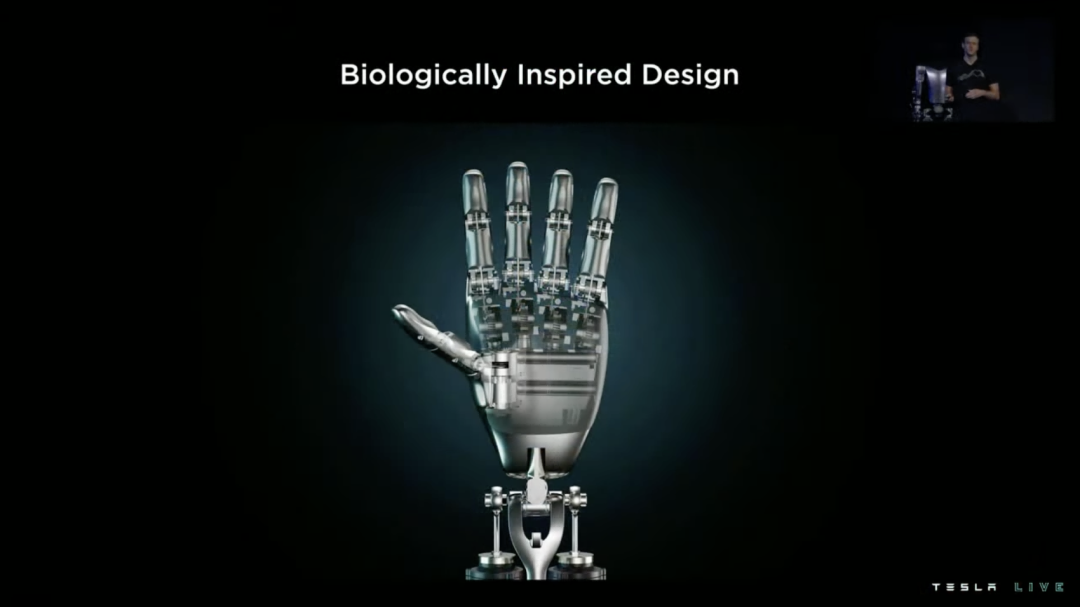
The current version of the Tesla Bot can already walk autonomously and pick up some items. For a humanoid robot, the most critical part is the “brain”, which is the FSD computing platform. It needs to perceive the physical world and be able to move and interact on its own.
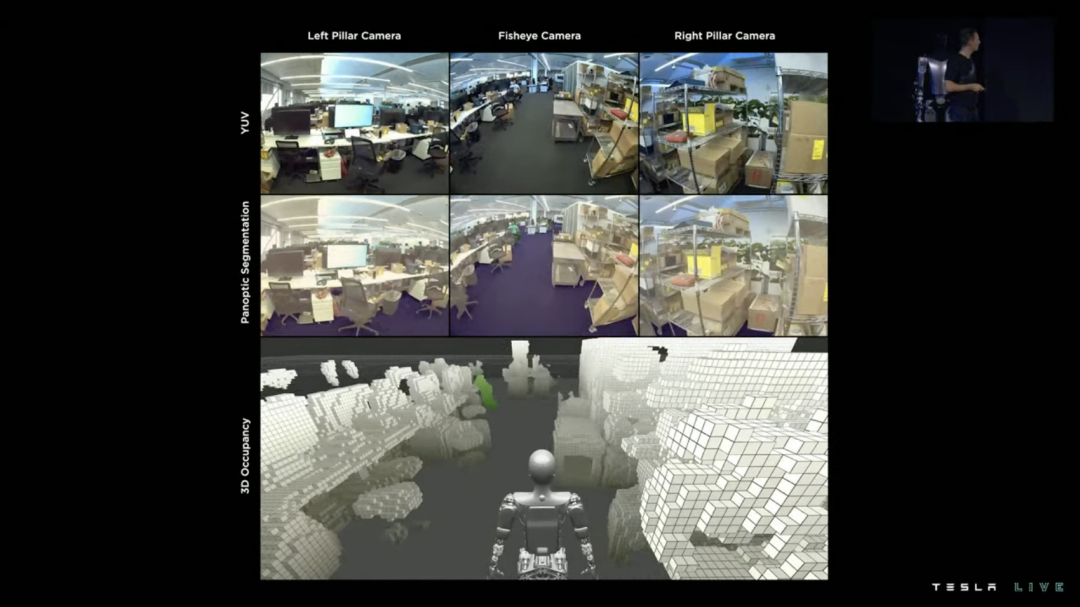
Elon Musk said that the cost of future humanoid robots will be significantly reduced, to about $20,000, or about RMB 143,000. The world’s richest person said that if robots become ubiquitous in the future, the human economy will develop better, and people will be able to choose physical labor, but it will not be necessary. Instead, people can choose to do more mental work.

At the same time, he didn’t forget to advertise for recruitment: “Within Tesla, we choose directions and do what we think is right. Autonomous driving is important and will bring revolutionary changes to transportation. Humanoid robots can unleash greater productivity. We hope that Tesla AI Bot can develop carefully and orderly, and we look forward to more people joining us to achieve more ideas and the best results.”
The Tesla Bot is based on Tesla’s engineering technology and has done some targeted work for humanoid robots, such as reducing the complexity of components. From sensing to fusion computing, all functions are integrated into a unified battery pack, and an efficient cooling system is used to dissipate heat from the PCB motherboard. The most important part, the central brain, comes from the FSD of Tesla cars, but structural adjustments are needed to make it more suitable for robots, such as more wireless connectivity modules.

How to transfer Tesla’s automotive capabilities to humanoid robots? Engineers provided an example of simulating robot falling using automotive crash tests to protect the central computing platform in the “brain”.

How to make humanoid robots walk more naturally? Tesla will use a combination of software and hardware to enable the robots to engage in multimodal learning, while also referencing biological structures, such as the human knee, to make minor adjustments to mechanical structures, such as torque.

Tesla stated that the legs of the Tesla Bot are highly flexible and can perform large leg kicking movements without damaging the joint drivers.

This technology is also derived from automotive driver (i.e., motor) technology. Engineers will use point cloud simulations to analyze driver mechanical data, allowing drivers to perform each action with accuracy. Different drivers, drive modes, and torques have varying characteristics.
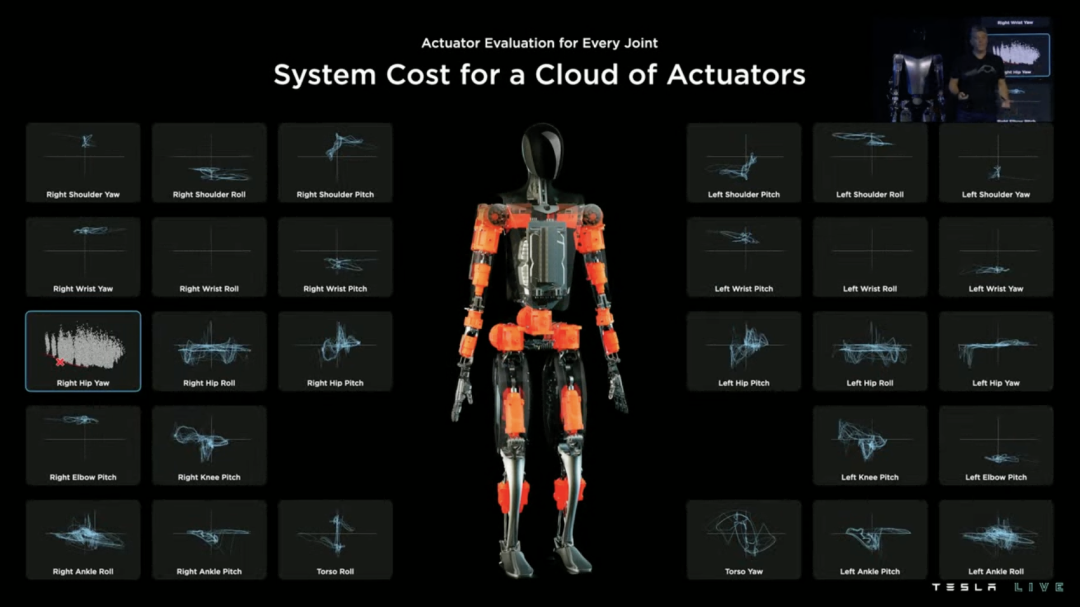
Although only used to drive mechanical joints, Tesla Bot drivers have powerful output forces and can even lift a piano.

The hand-drive structure of the Tesla Bot is relatively more miniature, but also the most complex. Engineers hope that it can grasp very small and thin objects, which requires full consideration of ergonomic design principles, like being able to grab things in the factory like humans do.
The first version of Tesla Bot currently allows for both upper and lower body movement and can record the movement trajectory while learning about its environment. Tesla hopes the robot can better perceive its surroundings, at least to the extent of being able to find a charging station.

In fact, this feature is currently achievable by our household vacuum robots. However, compared to wheel-driven machines, the movements of humanoid robots are much more complicated, and a safe distance from the surroundings needs to be maintained.
Therefore, the Tesla Bot needs to have a physical “consciousness,” as well as the ability to move freely, maintain balance, and cope with environmental risks.
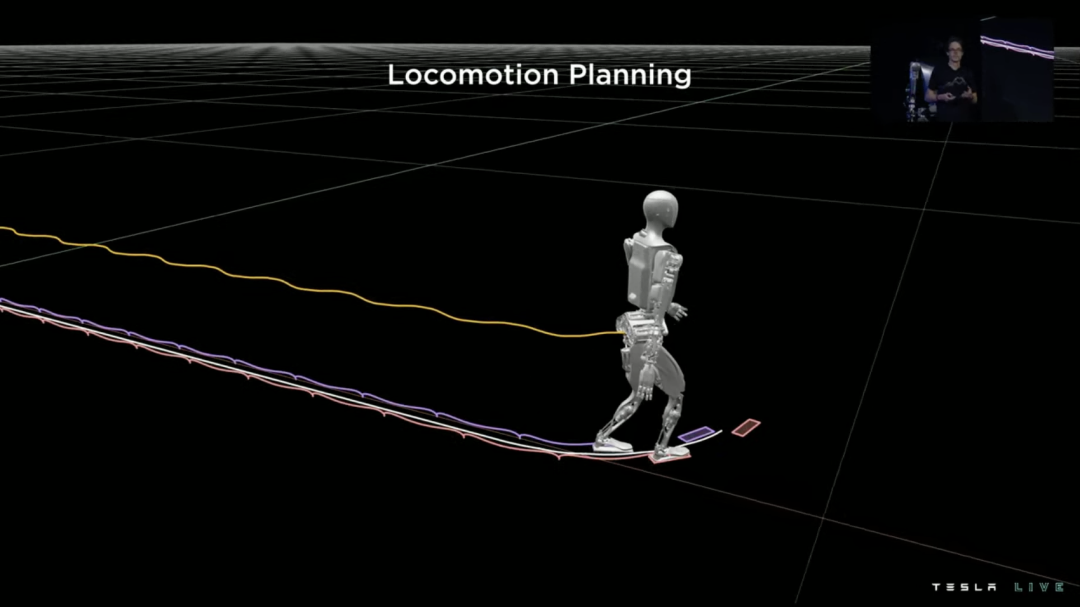
In terms of motion path planning, engineers have learned a lot from the automotive industry, and many previous engineering concepts have been verified in the process of applying this technology to robots.

Of course, the real world is much more complex than simulations. Tesla believes it is important for Tesla Bot to respond to the real world, and the engineers believe that the more the robot’s gait resembles that of a human, the more it will continue to learn and ultimately be more natural in its interactions with the environment.

As seen here, Tesla’s talented engineers have done a lot of meticulous work on the mechanical structure of the drive system, which will make Tesla Bot’s movements more human-like and potentially stronger than human muscles.According to the parameters provided by Tesla, the power consumption of human form with a weight of 73kg is 100W when sitting and 500W when brisk walking. The entire body has more than 200 DoF degrees of freedom, and the degree of freedom of hands reaches 27 DoF.

Similar to how humans control limb movements through cerebellum and nervous central system, the numerous drivers and connectors all over Tesla Bot’s body also require the computational power of the FSD platform to command, and continual data accumulation for machine learning.

The good news is that Tesla has done a lot of work on FSD.
In 2021, 2,000 people participated in the FSD Beta test, and this number grew to 160,000 in 2022.

FSD can be seen as a “multi-camera video neural network” that predicts future actions of the surrounding environment. The camera collects massive amounts of video data, which can be split into many frames. How does Tesla train a video model on this data?

The answer is a GPU cluster, which may be the world’s largest video processing supercomputer equipment. It must be extremely efficient for video editing, so it is recommended that our photographer purchase a set. Of course, if the Tesla Bot that Chang Yan ordered arrives, the Big Crown Prince may also face the fate of being deposed.

In addition to the regular version of Tesla Bot mentioned above, Musk also teased a surprise on social media – a Catgirl version of Tesla Bot will be launched.
Sleeker, cooler, a rendering image already ignites my robot soul.

Talking about the matter of Boss Chang wanting to replace employees with Tesla Bot, I found that the only person this company might not be able to afford to lose is President An, who is responsible for business. But after our calculation, he also needs Tesla Bot, so he can control it remotely and have drinks with thirty clients at the same time. Of course, the clients might also send their own robots.
Mr. Musk, have you heard the needs of your users? We hope your company can release Tesla Drink Bot as soon as possible. Thank you.
Meanwhile, we also provide a holiday bonus for our students who never forget to keep up with our news. Reply “Tesla wallpaper bonus” to get two official Tesla mobile phone wallpapers. Move your fingers and reply now.

-END-
This article is a translation by ChatGPT of a Chinese report from 42HOW. If you have any questions about it, please email bd@42how.com.
